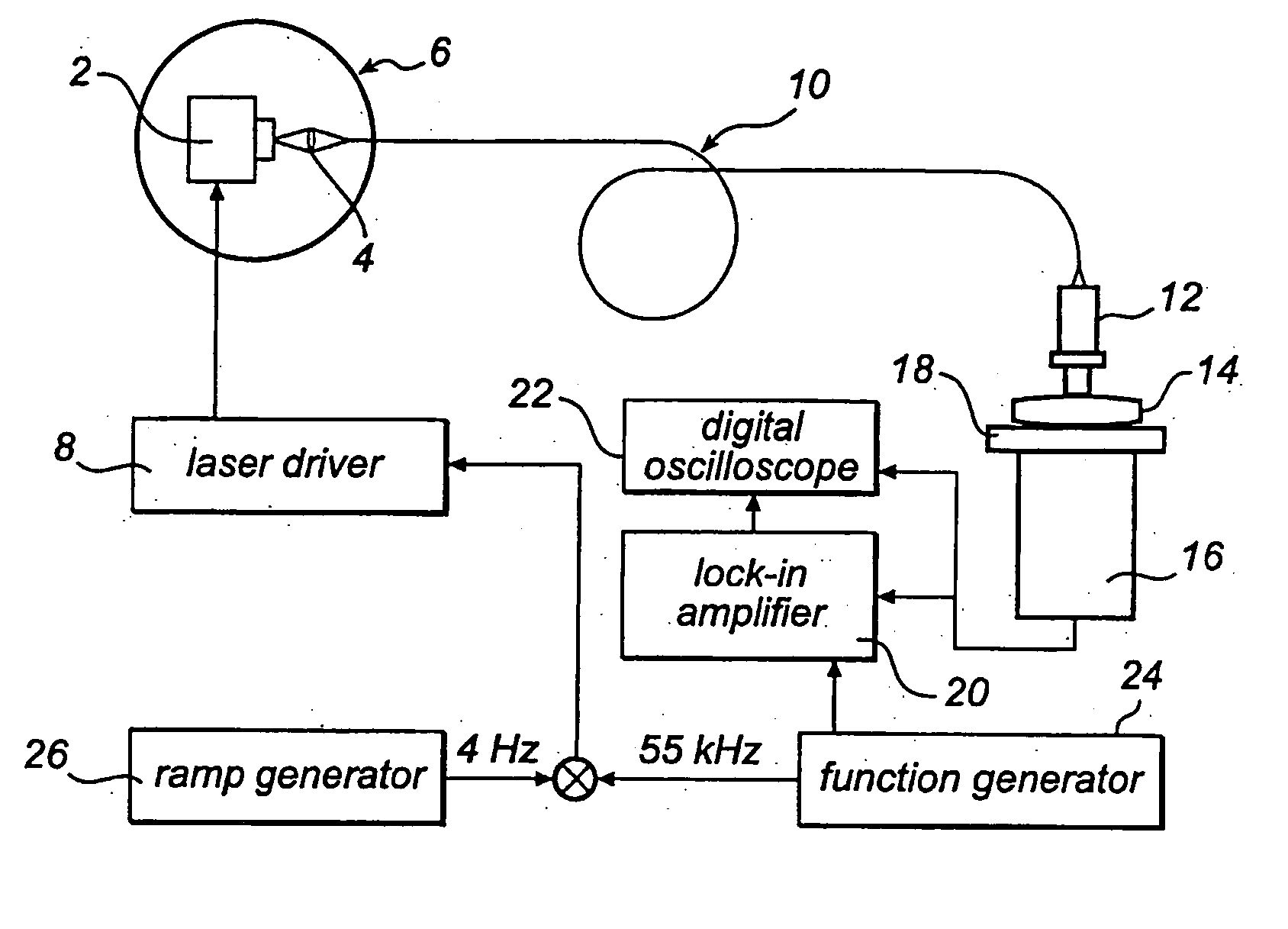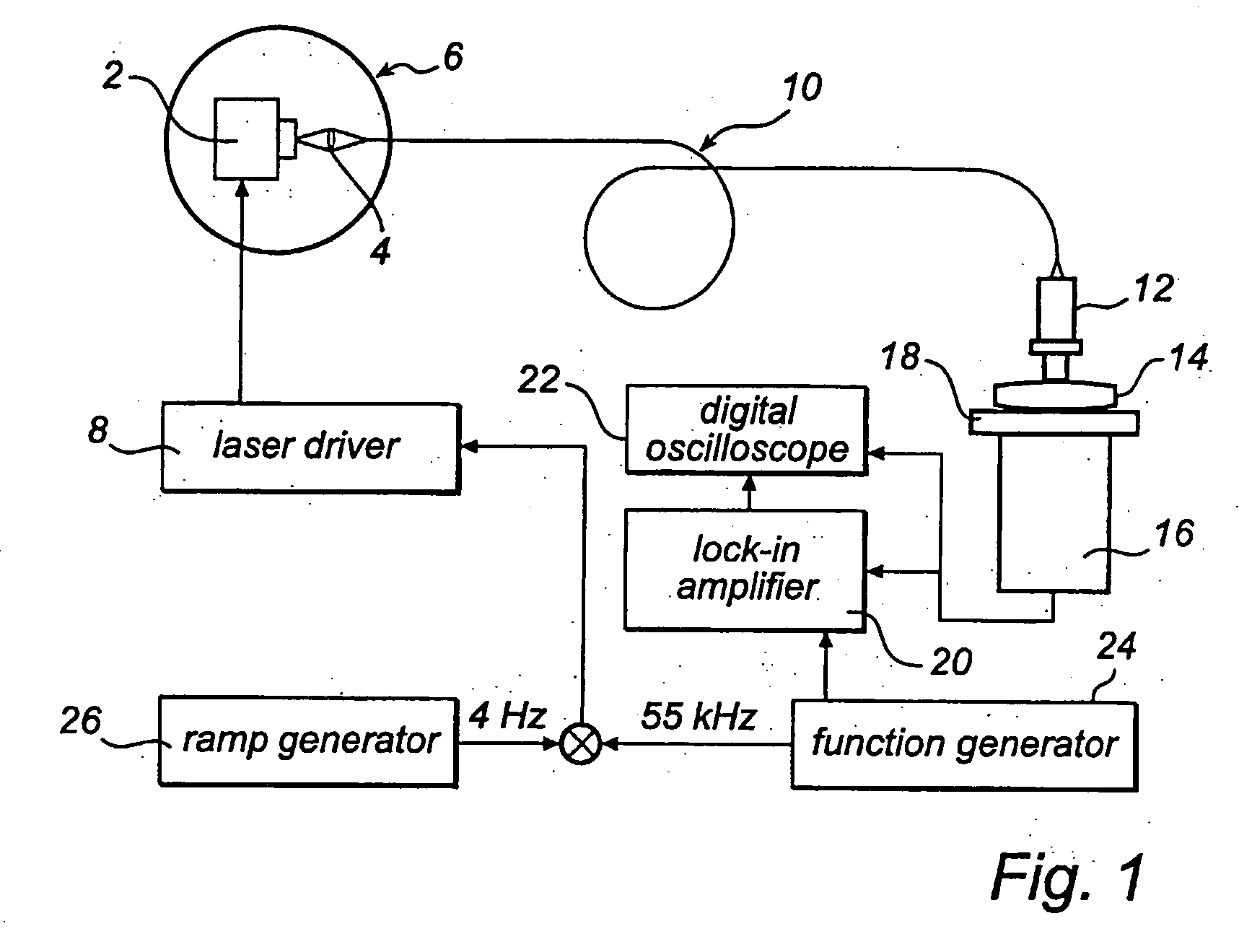Method of analysing a pharmaceutical sample
a sample and analytical technology, applied in the field of analytical methods of pharmaceutical samples, can solve the problems of inability to apply relevant measurement techniques, inability to determine the physico mechanical parameters of solid or semi-solid samples, and inability to analyze chemical content, etc., and achieve the effect of precise control
- Summary
- Abstract
- Description
- Claims
- Application Information
AI Technical Summary
Benefits of technology
Problems solved by technology
Method used
Image
Examples
Embodiment Construction
[0034] One way of performing the measurement according to the present invention is to use an absorption technique, such as wavelength modulation spectroscopy. With this technique the wavelength of a light source, in this case a diode laser is scanned in time such that the wavelength is shifted back and forth across a small wavelength region, which includes the absorption wavelength of a free gas, i.e. oxygen. The diode laser is furthermore modulated at a high frequency and a very sensitive detection at the same frequency or at some harmonic, referred to as lock-in detection, is reached. This arrangement can be performed in a transmission mode or in reflection mode depending on how the detector is oriented in relation to the light delivery system.
[0035] The measurements of free gas content can be realised in different ways. The use of wavelength modulation diode laser spectroscopy is convenient because of the small size and low cost of these lasers. Together with lock-in technique i...
PUM
 Login to View More
Login to View More Abstract
Description
Claims
Application Information
 Login to View More
Login to View More - R&D
- Intellectual Property
- Life Sciences
- Materials
- Tech Scout
- Unparalleled Data Quality
- Higher Quality Content
- 60% Fewer Hallucinations
Browse by: Latest US Patents, China's latest patents, Technical Efficacy Thesaurus, Application Domain, Technology Topic, Popular Technical Reports.
© 2025 PatSnap. All rights reserved.Legal|Privacy policy|Modern Slavery Act Transparency Statement|Sitemap|About US| Contact US: help@patsnap.com



